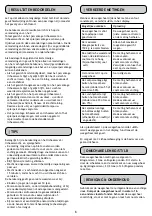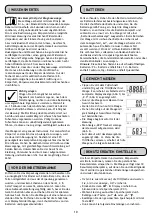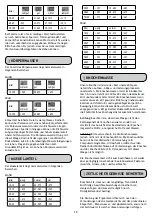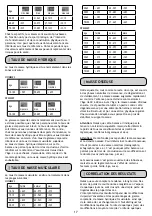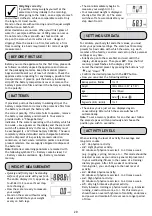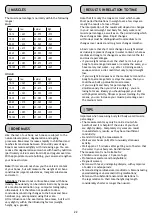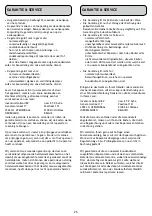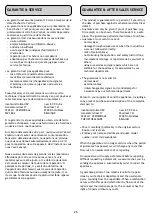
The muscle percentage is normally within the following
ranges:
MAN
Age
low
normal
high
10-14
< 44%
44 - 57%
> 57%
15-19
< 43%
43 - 56%
> 56%
20-29
< 42%
42 - 54%
> 54%
30-39
< 41%
41 - 52%
> 52%
40-49
< 40%
40 - 50%
> 50%
50-59
< 39%
39 - 48%
> 48%
60-69
< 38%
38 - 47%
> 47%
70-100
< 37%
37 - 46%
> 46%
WOMAN
Age
low
normal
high
10-14
< 36%
36 - 43%
> 43%
15-19
< 35%
35 - 41%
> 41%
20-29
< 34%
34 - 39%
> 39%
30-39
< 33%
33 - 38%
> 38%
40-49
< 31%
31 - 36%
> 36%
50-59
< 29%
29 - 34%
> 34%
60-69
< 28%
28 - 33%
> 33%
70-100
< 27%
27 - 32%
> 32%
Like the rest of our body, our bones are subject to the
natural development, degeneration and ageing
processes. Bone mass increases rapidly in childhood and
reaches its maximum between 30 and 40 years of age.
Bone mass reduces slightly with increasing age. You can
reduce this degeneration somewhat with healthy nutrition
(particularly calcium and vitamin D) and regular exercise.
With appropriate muscle building, you can also strengthen
your bone structure.
note:
this scale will not show you the calcium content
of your bones, but will measure the weight of all bone
constituents (organic substances, inorganic substances
and water).
Attention:
Please do not confuse bone mass with bone
density. Bone density can be determined only by means
of a medical examination (e.g. computer tomography,
ultrasound). It is therefore not possible to draw
conclusions concerning changes to the bones and bone
hardness (e.g. osteoporosis) using this scale.
Little influence can be exerted on bone mass, but it will
vary slightly within the influencing factors (weight,
height, age, gender).
note that it is only the long-term trend which counts.
Short period fluctuations in weight over a few days are
mostly the result of a loss of fluid.
The interpretation of the results will depend on changes
in your: overall weight and body fat, body water and
muscle percentages, as well as on the period during which
these changes take place. rapid changes
within days must be distinguished from medium term
changes (over weeks) and long term changes (months).
A basic rule is that short term changes in weight almost
exclusively represent changes in water content, whereas
medium and long term changes may also involve the fat
and muscle percentages.
• If your weight reduces over the short term, but your
body fat percentage increases or remains the same, you
have merely lost water – e.g. after a training session,
sauna session or a diet restricted only to rapid weight
loss.
• If your weight increases over the medium term and the
body fat percentage falls or stays the same, then you
could have built up valuable muscle mass.
• If your weight and body fat percentage fall
simultaneously then your diet is working – you are
losing fat mass. Ideally you should support your diet
with physical activity, fitness or power training. By this
means, you can increase your muscle percentage over
the medium term.
Important when measuring body fat/body water/muscle
percentage:
• The measurement may only be carried out while
barefoot and it is helpful if the soles of your feet
are slightly damp. Completely dry soles can result
in unsatisfactory results, as they have insufficient
condutivity.
• Stand still during the measurement.
• Wait several hours (6-8) after unusually strenuous
activity.
• Wait approx. 15 minutes after getting out of bed so that
the water in your body can be distributed.
The measurement is not reliable for:
• Children under approx. 10 years of age;
• Professional sporters and bodybuilders;
• Pregnant women;
• Persons with fever, undergoing dialysis, with symptoms
of edema or osteoporosis;
• Persons taking cardiovascular medication. Persons taking
vascodialating or vascoconstricting medications;
• Persons with substantial anatomical deviations in
the legs relative to their total height (leg length
considerably shorter or longer than usual).
| muscLes
22
| tips
| bone mAss
| resuLts in reLAtion to time

